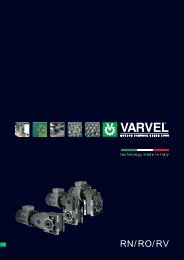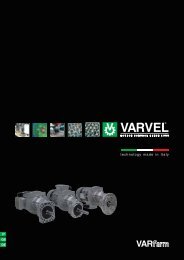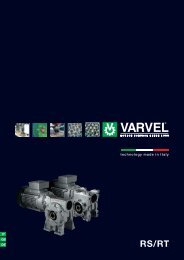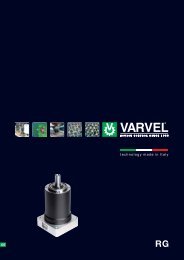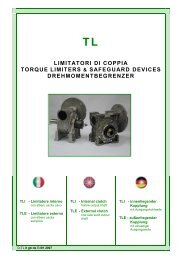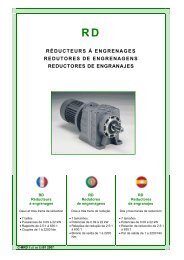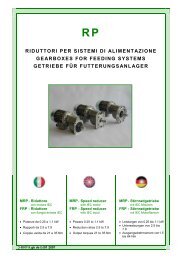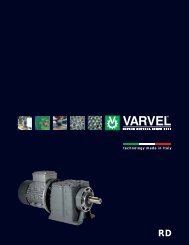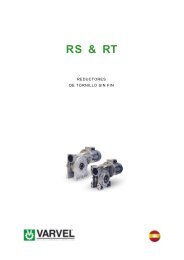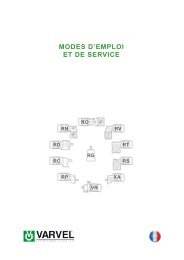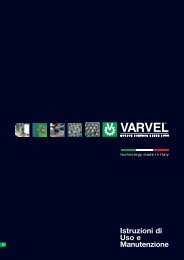Working & Maintenance Instructions - Varvel
Working & Maintenance Instructions - Varvel
Working & Maintenance Instructions - Varvel
Create successful ePaper yourself
Turn your PDF publications into a flip-book with our unique Google optimized e-Paper software.
<strong>Working</strong> <strong>Instructions</strong> & <strong>Maintenance</strong>InstallationINSTALLATION4.1 TolerancesTolerances are recommended according to DIN 748 as follows Shafts:solid input or output ISO h6hollow input ISO E8hollow output ISO EH7centre hole DIN 332, DR Flanges: spigot ISO h74.2 PrecautionsCheck that the unit to be put into service is rightly sized to perform the required function and that its mounting positioncomplies with the order. Such data are shown in the nameplate fitted on the unit.Check mounting stability so that the unit operates without vibrations or overloads, or insert damping couplings or torquelimiters.Care must be taken to ensure exact positioning and steadiness when handling the units to not origin damages to normaloperation of the unit.When hoisting, use relevant locations of the housing or eyebolts if provided, or foot or flange holes.Never hoist on any moving part (input or out-put shafts).4.3 GroundworkClean carefully all the surfaces of shafts and flanges paying attention that the used product for cleaning does not came incontact with sealing lips of oil seals to avoid any damage and lubricant leakages.4.4 Set upThe unit may be connected for clockwise or counter-clockwise rotation.Stop immediately the unit when unexpected running or noise occurs: if the part originating the anomaly is not identified,other parts may be damaged with consequent difficulty in going back to the cause.4.5 Pulleys, Pinions, CouplingsBore tolerance F7 is recommended when fitting pulleys, pinions, couplings, etc. on the output shaft.It is also recommended to not fit or extract with mallets or hammer hits to not damaging internal parts, but to use the shaftheadthreaded bore as reaction to fitting or extraction. Belt drives: the force imposed on the shaft due to belt tension to not exceed the maximum permissible radial force ofthe unit. Chain drives: properly lubricate the chain drive and check that no pitch differences hinder its smooth running.4.6 Torque armThe torque arm Type BR (Series RS) or Type BT (Series RT) can rotate by 45° within the arc 45° to 315°.The types BRV (Series RS) and Type BTV (Series RT) incorporate a Vulkollan® bush to allow vibration dumping.4.7 PaintingCarefully protect oil seals, coupling faces and shafts when re-painting the units.- 21 -



